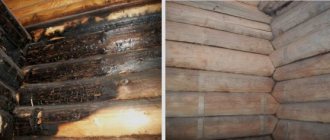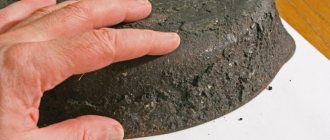How he was born again, became 10 years younger and cleansed his body and soul.
The concept of a Russian bath, the history of its appearance
A Russian bathhouse is a specially equipped room that is designed for water hygiene and thermal procedures for the purpose of prevention and healing of the entire body.
Today it is difficult to judge what prompted ancient man to think about creating a bathhouse. Perhaps these were random drops that fell on a hot fireplace and created small clouds of steam. Perhaps this discovery was made intentionally, and the person immediately appreciated the power of steam. But the fact that the culture of steam baths has been known to mankind for a very long time is confirmed by numerous archaeological excavations and written sources.
Thus, according to the ancient Greek chronicler Herodotus, the first bathhouse appeared in the era of tribal communities. And having visited back in the 5th century. BC. the territory of the tribes inhabiting the Northern Black Sea region, he described in detail the bathhouse, which resembled a hut-hut, with a vat installed in it, into which red-hot stones were thrown.
Türkiye
The hammam is an octagonal marble room with heated floors. The ceiling must be in the shape of a dome, so that condensation does not drip onto hot bodies, but flows peacefully down the walls. There are hot flat stones on the floor, on which it is convenient to lay out tired bodies. Trampling someone underfoot is a common thing here: this is how mustachioed bathhouse attendants give a soapy massage.
On the women's side, the girls consume sherbet and smear themselves with rose oil. Once upon a time, Turkish women here rubbed their legs , armpits and private parts with arsenic ointment to get rid of excess curls. Others even treated the ears and nasal cavity. Of course, there is competition in harems! Virgins the rest wore thin, floor-length clothes.
There is a prominent Turkish bath in Istanbul, called Cagaloglu, in operation since 1741. Once upon a time, Turkish sultans steamed here, and now they even make movies. For example, the epic about Indiana Jones.
Unwashed Europe and clean Russia
Later sources indicate that bath culture also existed in Ancient Rome, whose rulers spread it to the conquered territories of Western Europe. However, after the fall of the Roman Empire, both the bathhouse and ablution as such were forgotten in Western Europe. There was a ban on bath culture, which was explained, among other things, by widespread deforestation and, as a consequence, a shortage of firewood. After all, in order to build a good bathhouse and heat it well, it is necessary to cut down a lot of trees. Medieval Catholic ethics also played a certain role, which taught that nudity of the body, even for washing, was sinful.
The decline in hygienic requirements led to the fact that Europe for many centuries was mired not only in its own sewage, but also in diseases. Monstrous epidemics of cholera and plague only for the period from 1347 to 1350. killed more than 25,000,000 Europeans!
Bath culture in Western European countries was completely forgotten, as evidenced by numerous written sources. Thus, according to Queen Isabella of Castile of Spain, she washed herself only twice in her life: when she was born and when she got married. An equally sad fate befell King Philip II of Spain, who died in terrible agony, consumed by scabies and gout. Scabies finally tormented and brought Pope Clement VII to the grave, while his predecessor Clement V died of dysentery, which he contracted because he never washed his hands. It is no coincidence, by the way, that dysentery began to be called “the disease of dirty hands” already in the 19th and 20th centuries .
Around the same period, Russian ambassadors regularly reported to Moscow that the king of France stank unbearably, and one of the French princesses was simply eaten by lice, which the Catholic Church called God's pearls, thereby justifying their senseless ban on baths and the culture of basic hygiene procedures.
No less curious and at the same time repulsive are the archaeological finds of medieval Europe, which today can be seen in museums around the world. Eloquently testifying to the widespread filth, stench and uncleanliness, exhibits are on display for visitors - scratchers, flea traps and saucers for crushing fleas, which were placed directly on the dining table.
Flea catcher - devices for catching and neutralizing fleas; in the old days an essential element of the wardrobe
Today it has already been proven that French perfumers invented perfumes not in order to smell better, but in order to simply hide the smell of a body unwashed for years under the fragrance of floral aromas.
Blokholovka
And all that remains is to sympathize with the daughter of Grand Duke Yaroslav the Wise , Anna , who, after marrying the French King Henry I , wrote to her father at home, saying:
Why did I anger you so much, and why do you hate me so much that you sent me to this dirty France, where I can’t even really wash myself?!
Rome
Whether it was a bathhouse or a city, the ancient Romans built up their baths as a feast for the eyes, with ideas like gilding and painting. The largest are the Baths of Caracalla, with more than two thousand naked bodies at one time. There was also a gymnasium, a library and a cafeteria. Roman baths are generally an analogue of today's fitness clubs. There the Romans pumped their muscles with weights and played ball. The main thing is to assign a slave to the abandoned clothes, otherwise the bathhouse thieves will take everything down to the last sandal. The baths were heated with hot water pipes: they were laid under the floor and behind the walls.
Today, the washing palaces are in ruins, and the Baths of Caracalla (or what remains of them) are under the protection of the Roman police.
But what about Rus'?
And in Russia, the bathhouse has always existed , at least according to the Byzantine historian Procopius of Caesarea , who back in the 500s. wrote that the culture of ablution accompanies the ancient Slavs throughout their lives.
According to ancient descriptions, the bathhouse was a log structure with a fireplace, on the hot coals of which water was poured from time to time, which turned into steam. According to popular beliefs, the guardian of the bathhouse and its soul is the bannik - a completely naked old man, whose body is covered with broom leaves. Bannik was supposed to be cajoled from time to time by treating him to bread and salt, which once again emphasizes the respectful attitude of the Slavs towards the bathhouse itself and its “essence”, which they literally idolized.
Appearing on the territory of Russia back in the days of paganism, when people worshiped the cult of fire and water, both the bathhouse and the home were deeply revered by the Slavs, as noted in their works by researchers of Russian life I. Zabelin and A. Afanasyev . The bathhouse was not just a place where one could cleanse one’s body of dirt and take hygienic procedures, but also a kind of medical and preventive institution where people of the ancient medical specialty could put any sick person back on his feet.
In turn, the chronicles of the X–XIII centuries. indicate the widespread use of the bathhouse among the Eastern Slavs, starting from the 5th–6th centuries, when it was affectionately called movnitsa, mov, mylnya and vlaznya. And even with the baptism of Rus', when the church began an active struggle against folk healers and all sorts of superstitions, the bathhouse did not cease to exist, but only strengthened its influence, as it became a place for mandatory visiting before performing the most important church rituals - baptism, wedding, communion and others .
Japan
Bathhouse in Japanese is called "ofuro". Instead of a traditional stove with coals and benches, there is a wooden barrel with hot sawdust. You sit in such a barrel almost up to your neck and imagine yourself as Diogenes. Instead of sawdust, you can sit in ordinary water, heated to 45 degrees. The main thing is to keep your head cold. And no soap - the fat of slaughtered animals is unsympathetic to Buddhists.
The public Japanese bathhouse is nicknamed “sento”: it’s a bit crowded for ten people in a barrel at once, so the Japanese sit side by side in the pool. And they don’t complain about the overcrowding: sento is rather a club where exhausted men in barrels decide the fate of their homeland.
Tokyo's onsen bathhouse (with water brought from hot springs) has dozens of baths and barrels. These kegs are not filled with rum or even beer, but with live Japanese gentlemen. Simpler people go to public baths, which are on every corner and are simply called “yu” - hot water.
“Heat my bathhouse in white!”
The white bathhouse, which V. Vysotsky sings about in his song, appeared in Rus' much later than the black bathhouse, gradually displacing the latter. At first, the Slavs built baths without a chimney, in black style, and a periodically opening door was used as natural ventilation. In a black-style sauna, smoke does not go into the chimney, but into the sauna room itself, from where it exits through an open door, as well as through a special hole in the ceiling or wall (the so-called “pipe”). After the firebox is finished and the coals have completely burned out, the door is closed, the chimney is plugged, and the shelves, benches and floor are washed generously with water to remove soot and the bath is kept for about 15 minutes before use so that it dries and gains heat. Then the remaining coals are raked out, and the first steam is released so that it carries away the soot from the stones. After that you can steam. A black sauna is more difficult to heat and cannot be heated during washing (like a white sauna), but due to the fact that the smoke eats up all the previous odors, a black sauna has its own charm, unattainable in a white sauna.
Later they began to build white baths, where the source of heat and steam was a stove-heater with a chimney.
Vasily Shevchuk. "Russian baths in black style"
In addition, at that time there was another interesting and unusual way to steam directly in a Russian oven. To do this, it was carefully heated and the bottom was covered with straw. Then a person climbed inside the oven, taking with him water, beer or kvass, which he poured over the hot walls of the hearth and took a steam bath, after which he came out and doused himself with cold water. Even the weak and old people did not deny themselves such an unusual pleasure, they were simply pushed into the oven on a special board, and then a healthy person climbed in to wash and steam the weak one, as expected.
Hungary
The City of Baths is about Budapest. Right in the middle of the capital there are thermal springs, which would be a sin not to convert into baths. So the Hungarians chose not to sin: during the time of Turkish rule in the 17th century, they built the famous Cesar, Kiraly and Rudas. Glass roofs, intricate mosaics and wave pools In 1937, at the Bathing Congress, Budapest was named an international city of therapeutic water procedures. Today there are about 20 thermal baths in the capital.
In the bathhouse called Szechenyi you can accommodate a hundred people - and all of the royal family. Because in the middle of Budapest, in a city park, a natural palace was built for baths. Here is the hottest spring in Europe, 77 degrees Celsius. Enthusiasts wash directly in the open air.
Interesting fact: under Soviet rule, Magyar women could enter the bathhouse naked, wearing only an apron with a pocket for a key. Nowadays, even in single-sex establishments, people wash in special suits.
A bathhouse for a Russian is more than love!
The bathhouse accompanied every Russian person from birth to death. In no other culture in the world has it become as widespread as in Rus', where visiting it was elevated to an obligatory cult and had to occur regularly.
Not a single celebration could take place without it, and when meeting even a random guest, the owner first of all invited him to visit the bathhouse, and then taste the treat and spend the night. It is no coincidence that in Russian fairy tales, in addition to shelter and dinner, travelers are always offered a bathhouse.
Hen and stag parties, as they would say today, necessarily ended with a visit to the bathhouse, and the young people themselves, having become spouses, were obliged to take it regularly, every time after marital intimacy, if they went to church the next morning. It was necessary to go to the bathhouse with almost any ailment, especially if it was a cold, runny nose, cough and joint diseases.
The therapeutic effect of this simple and pleasant procedure is comparable to the strongest effect on the entire human body. When every cell of the body receives an unimaginable charge of energy, forcing it to work in a new way, thereby restarting the natural processes of regeneration and self-renewal. And alternating high temperatures with cold, when after visiting the bathhouse it is customary to jump into the snow, an ice hole, into a river, or simply douse yourself with ice water - this is the best way to harden and strengthen the immune system.
As for the special love of Russians for the bathhouse, it is embodied not only in folklore, but also reflected in historical documents. Thus, the Russian historian and researcher of the customs and life of the Russian people N.I. Kostomarov repeatedly notes in his works that people went to the bathhouse very often in order to wash themselves, heal, and just for fun. According to him, for a Russian person, visiting a bathhouse is a natural need and a kind of ritual, which neither adults, nor children, nor the rich nor the poor can violate.
In turn, foreigners who visited Rus' were surprised to note the habit of the Russian people to wash themselves very often and for a long time, which they had not encountered either in their homeland or in other countries. In fact, as a rule, we washed once a week, on Saturdays. But for foreigners who almost never washed, it seemed “very often.” For example, the German traveler Adam Olearius once wrote that in Russia it is impossible to find a single city or even a poor village where there is no bathhouse. They are simply here at every turn, and they are visited at every opportunity, especially during periods of ill health. And as if to summarize, in his writings he noted that perhaps such a love for the bathhouse is not without practical meaning, and that is why the Russian people themselves are so strong in spirit and healthy.
As for Europe, for the revival of the custom of steaming and washing regularly, it should be grateful to Peter I and the Russian soldiers, who, terrifying the same French and Dutch, steamed in a hastily built bathhouse, and then jumped into the icy water, despite to the frost that reigned outside. And the order given in 1718 by Peter I to build a bathhouse on the banks of the Seine completely horrified Parisians, and the construction process itself attracted onlookers from all corners of Paris.
New World
Baba Yaga is not at all an insidious cannibal, as fairy tales teach. Calling Ivan Tsarevich into the oven, she was not going to bake pies with human flesh, but to properly wash the dirt. This is how they used to wash in Siberia: they raked out all the coals from the heater, put a basin with boiling water - and washed for health. From there, the custom of bathing in the hearth reached America. The Indians dug their baths right in the ground, and it was possible to climb into such a steam room only on all fours. Later they began to build a special wigwam on the edge of the settlement: in the middle there were hot coals, and around them red-cheeked Indians whipped each other with brooms made of corn stalks. This structure was called a “temazcal”: there was a window on the ceiling, the walls were low, you couldn’t even stand up to your full height. Therefore, the Indian bathhouse attendants were entirely hunchbacks and dwarfs.
The royal baths of the Mayan Indians can now be found in Mexico in the suburb of Cancun, the city of Chichen Itza. But you won’t be able to wash there: the city has been empty for five hundred years.
Manufacturing
It is quite possible to decorate the bathhouse yourself. A bench made with your own hands is a source of pride for the craftsman. Depending on your skills, you can make a simple or two-tier bench. With some skill, you can handle the second option without any special skills, following the instructions. In any case, you will need a diagram and drawings.
Simple shop
If you are a novice carpenter, it makes sense to make a small mobile bench. As you work, you will gain minimal experience, then you will be able to cope with more complex and intricate designs. First, make a diagram indicating all the dimensions (height, length, width).
For manufacturing you will need self-tapping screws, as well as polished ones:
- boards 150x20x5 cm – 2 pcs.;
- bars 5×5 cm – 2 pcs.;
- strips 10×2 cm – 2 pcs.
Let's consider the stages of work.
- Divide the first block into 4 parts of 50 cm each - these are the future legs.
- Divide the second block into 4 parts of 41 cm each - these will be horizontal posts.
- Make 2 frames. To do this, fasten the legs using self-tapping screws with the posts in the upper part. Fasten the lower part of the rack from the inside at a height of 5 cm from the floor.
- Fix 2 planks sequentially on the frames using 4 self-tapping screws. Leave a gap of about 1 cm between the elements. Attach the screws from the inside or deepen them into the wood by 0.5 cm, cover them with putty (otherwise, when warmed up, the screws will leave burns).
- Fix thin strips on the lower crossbar for better stability of the structure.
When making a bench, according to all the rules, do not use self-tapping screws with a screwdriver. There are special wooden dowels that are driven into prepared holes. This technique is difficult for beginners, but it is necessary to know about it.
Two-tier bench
To make such a design you will need a drawing. This is the only way to take into account every little detail and insure yourself against remaking the bench. Working with such a workpiece is much easier and more enjoyable.
Let's look at how to make a structure 3 m wide, 3.6 m long and 2.4 m high.
- At a long blank wall, install a frame made of 50x70 mm timber.
- Sand 12 pieces of 110cm length and 6 pieces of 90cm length for the top shelf.
- For the bottom shelf, sand 6 pieces of 140 cm length and 6 pieces of 60 cm length.
- Make seats (flooring) from boards approximately 20x120 mm, their length should correspond to the length of the wall.
- For free flow of water and ventilation, leave 1 cm gaps between the boards.
- For the transverse ligament between the posts of both shelves, it is necessary to prepare 3 beams.
- For the upper tier, knock down the racks in a U-shape and connect them with two boards. Using 5x5 or 10x10 cm bars, attach the structure to the wall.
- Knock down the racks for the lower tier in an L-shape. Combine the long sides with the racks of the upper tier. Connect the lower racks together with boards.
- The work on the frame is completed. Now lay the boards on the tiers. To connect, use convenient fastening methods (the best option is wood nails).
Benefits for the body
The main property of the Russian bath is cleansing the body and organism. Steaming with wood has a beneficial effect on the nervous, respiratory and cardiovascular systems. In addition, this procedure improves metabolic processes.
A wood-burning sauna is useful for colds, rhinitis, chronic bronchitis, tonsillitis and polyarthritis. It is also effective for radiculitis, gout, neurasthenia and diseases of the kidneys and urinary tract. The steam room is recommended for people with mild cardiac disorders, hypotension, injuries and some pathologies of the gallbladder.
Many people believe that steam and high air temperatures are harmful to human health, especially to the heart and blood vessels. However, the opposite fact has been proven - it is temperature changes that ensure the removal of harmful substances accumulated on the vascular walls. If you visit the bathhouse, observing all the rules and features, the health benefits will be priceless:
- capillaries will be restored;
- heart function is normalized;
- the heart muscle will be strengthened;
- The vessels will become fully filled with blood.
The steam room removes a large amount of moisture from the body, intensely releasing sweat through the pores. Thanks to this, toxins, radionuclides, waste and other harmful substances are eliminated. The Russian bath is also useful for overweight people who want to lose weight, as good steaming promotes weight loss.
The steam room has no less effectiveness on the respiratory system. During bath procedures, breathing slows down and becomes deeper, due to which a large volume of oxygen enters the body. The substances released when wood burns are of great importance. For example, pine firewood helps with inflammation of the throat mucosa. At the same time, such firewood has a calming effect on the nervous system, curing chronic diseases and cleansing the respiratory tract.
You should also pay attention to the brooms used in the park. Various plants are used to create them.
Birch broom will help eliminate pain in joints and muscles after physical activity, as this tree has soothing and wound-healing properties. By contacting the skin, they cleanse it of existing inflammation (ulcers, rashes, etc.).
In addition, visiting a bathhouse improves a person’s appearance. With its help, the skin is cleansed of bacteria and the epidermis is renewed. The renewed dermis contains the necessary level of moisture. That is why after a steam bath the skin is always more tender and soft. It has no less effect on cellulite, smoothing it out and making it less noticeable.
Layout, projects
When planning a steam room, you should be guided by long-developed ergonomic standards, which determine how much space a standing, sitting and lying person needs, as well as at what height the person steaming and being steamed in a Russian bath or the top shelf in a sauna should be.
You will find all these recommendations with pictures demonstrating the basic principles in this article.
With this knowledge, you can begin to develop your own steam room project, into which you need to enter the dimensions of the future stove, as well as the length and width of the shelves in accordance with the selected type of bath. The necessary fire safety margins are added to the dimensions of the stove.
3x3 layout with steam room combined with sink
A bathhouse of this size will most likely combine a steam room and a washing room. Or you will reduce the size of the dressing room to a meter in width, which will turn it into a vestibule.
Below we offer the option of a combined steam room and washing room. If you wish, you can move the walls, specify the desired dimensions of the shelves and the dimensions of the stove, and fit them into the existing plan, so consider this diagram only as an initial impulse for your own creativity.
Bathhouse 3x3 layout with steam room
Bathhouse with steam room 3x5
This option promises more comfort - there is a place where you can sit and relax; the steam room can be planned either combined or separate from the washing room, which is quite acceptable.
The space of a bathhouse with a steam room of 3x5 meters can be organized as follows:
Steam bath 3x5 separately
Steam bath 3x5 together
Advantages
Three types of kindling are used in the baths - wood, electricity and gas. But the first option has many advantages over the other two. For example, you can be poisoned by gas. And the danger of explosion in such a bath increases. In addition, in remote areas of our country the gas pipeline may not yet be laid. The disadvantages of electric furnaces include high cost and interruptions in the power supply. That is why firewood is the most optimal and safe option.
The advantages of such a bath also include:
- the aroma of natural wood wafting throughout the room;
- easy adjustment of room temperature;
- the cost of wood is relatively low.
Taking into account all of the above, we can conclude that a simple wood-fired sauna is the simplest and most reliable way to take a steam bath.
Alder
Alder has a valuable quality - it has low thermal conductivity.
This allows you to avoid burns from contact with heated wood in the bathhouse. Alder boards and linings smell pleasant and have a reddish tint. Moreover, these qualities acquire even more pronounced forms over time. For a steam room, alder finishing fits all criteria. It does not warp due to shrinkage, does not emit drops of resin, and successfully withstands regular exposure to hot steam.
Among the disadvantages, the difficulty of mechanical processing of alder is noted. This material is not flexible, although it is quite soft. Taking into account the fact that perfectly smooth alder lining is almost never found on the market, it can be difficult to properly sheath a steam room with this material. In addition, alder is not the cheapest tree.
Finishing a sauna made of alder
Scope of application
Spruce wood is used on balconies, but only after special impregnation. The point is low resistance to water, high temperatures and attacks by harmful insects. Larch is used both inside and outside the house and is highly valued due to its practical qualities. Products made from ash and oak are recommended for living rooms with little humidity; they look beautiful and last a long time. To use eurolining for interior walls, the material is carefully prepared, preventing rotting and swelling.
Contrary to popular belief, European lining is suitable not only for utility rooms. Modern designers and developers have managed to refute this assessment. Wooden blocks are perfectly combined with tiles, various wallpapers, plaster and so on. Eurolining can be used on walls and ceilings to the same extent. But in the second case, the laid canvas should be arranged as tightly as possible.
Many people are interested in whether it is necessary to specially treat eurolining boards before laying them on the ceiling. There is no special need for this; you just need to dry the material at room temperature for at least 14 days. It is highly undesirable to speed up this process at home. Larch is not suitable for a bathhouse, where it will very soon take on an unpresentable appearance
Coniferous wood is also bad there, especially in the steam room, since careless touching can cause a burn
Alder, due to its increased concentration of tannins, is excellent for finishing a steam room. Such wood absorbs water abundantly and transmits little heat. Birch has a bright texture, but does not tolerate high humidity. But it will be very useful in dressing rooms or rest rooms, subject to antiseptic treatment. Please note: lining fastenings in damp rooms, unlike in an ordinary room, must also be protected from moisture.
The main tool of the bath industry
Popular wisdom says: “A bathhouse without a broom is like a rocker without a bucket.” Well, how? Right. It seems like everything is there, but there’s no point. Going to the bathhouse and not getting your share of a kind of scorching massage is akin to a crime. The secrets of the Russian bathhouse, which so excited the minds of Europeans, are inseparable from the broom, a seemingly simple, outrageously tool, but what an effective one. The Russian bathhouse always rested on three different brooms, like on three whales.
- Oak broom is good for oily, thick skin. It cleanses it perfectly, relieves inflammation, opens pores;
- Birch - indispensable for muscle inflammation, myositis, rheumatoid conditions;
- Juniper - has perhaps the most pronounced antibactericidal properties. It comes in handy for various colds.
A Russian bathhouse is not only a steam room, but also post-bath exercise, usually in the dressing room.
Korea
This is what the cheerful Slavs are used to: from the steam room - straight into the ice hole. But Koreans take care of their spiritual strength. That’s why they started almost a dozen pools with different temperatures in their baths. You should take turns plunging from the hottest to the coldest and vice versa. There is also a special room where it is customary to catch aromas, that is, breathe in herbs and resins. Hot pebbles are laid out on the floor: you sprinkle some dry dust on them and inhale the healing aroma.
Koreans are shy people. That’s why the first public baths were opened only a hundred years ago. But now there are even bath tours to Seoul. Most often, tourists go to Chimchilban. The location near the food market does not bother anyone. Here you can spend the whole night and even sleep, saving on a hotel.











